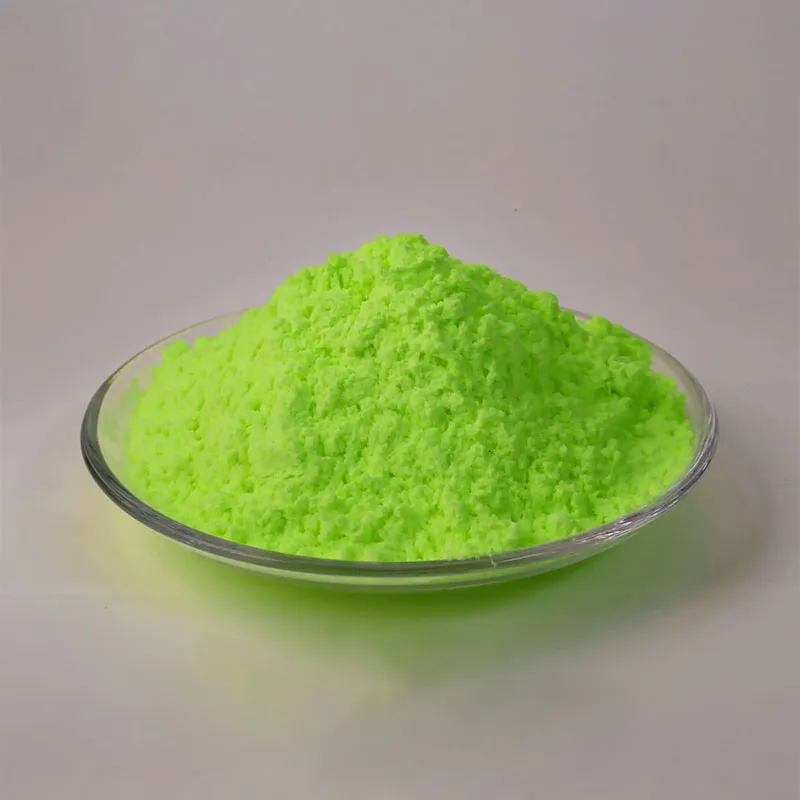What Are Optical Brighteners and How Do They Work?
2024-12-10
In the world of laundry detergents, cleaning products, and even some cosmetics, you’ve probably come across the term "optical brighteners." These substances are widely used to enhance the appearance of materials, making them look whiter and brighter. But what exactly are optical brighteners, and how do they work? Let’s dive into the science behind optical brighteners and their common applications in everyday products.
1. What Are Optical Brighteners?
Optical brighteners, also known as optical brightening agents (OBAs) or fluorescent whitening agents (FWAs), are chemicals that are added to products to enhance their visual appeal by making them appear brighter and whiter. These compounds work by absorbing ultraviolet (UV) light and re-emitting it as visible blue light, which makes the material look less yellow or dull and gives it a vibrant, clean appearance.
The most common chemical compounds used as optical brighteners include stilbene, benzoxazole, and coumarin derivatives. These agents are typically colorless under normal light but are highly effective at reflecting light in a way that alters how our eyes perceive the material.
2. How Do Optical Brighteners Work?
Optical brighteners work based on the principles of fluorescence. When UV light hits a material that contains an optical brightener, the brightener absorbs the UV light, which has a shorter wavelength. This energy excites the molecules in the brightener, causing them to release light at a longer wavelength—usually blue light.
The blue light that is emitted helps to counteract the natural yellowish or off-white tones in fabrics and other materials. As a result, the object or fabric appears to be whiter, brighter, and cleaner. This is especially noticeable when white fabrics are treated with optical brighteners, as they give the illusion of extra brightness and sparkle.
3. Common Uses of Optical Brighteners
- Laundry Detergents: The most common use of optical brighteners is in laundry detergents, where they are added to enhance the appearance of clothes, making whites look whiter and colors look more vivid. These brighteners help reverse the yellowing that can occur over time due to exposure to oils, sweat, and environmental factors.
- Paper Products: Optical brighteners are also commonly used in the paper industry to create bright, white paper. Printing companies use them in paper to ensure that printed materials appear vibrant and sharp.
- Cosmetics: Some cosmetic products, especially foundations and creams, include optical brighteners to help reduce the appearance of dark spots and give the skin a glowing, radiant look. These products help the skin appear more even-toned and luminous.
- Plastics and Paints: Optical brighteners are sometimes used in the manufacturing of plastics and paints to give products a glossy and bright finish. This is especially popular in consumer goods that are meant to look sleek and modern.
4. Are Optical Brighteners Safe to Use?
Optical brighteners are generally considered safe when used in the concentrations allowed by regulatory bodies. However, like any chemical compound, there are some concerns regarding prolonged or excessive exposure. For example, optical brighteners are often added to products that come into direct contact with the skin or clothes, raising questions about skin sensitivity and irritation.
Some individuals may experience allergic reactions or skin irritation if they come into contact with optical brighteners, especially in sensitive areas. There are also concerns about the environmental impact of optical brighteners, as they can accumulate in wastewater and potentially affect aquatic ecosystems.
To address these concerns, many companies are working to develop more eco-friendly alternatives to traditional optical brighteners, and some consumers choose to avoid products with OBAs due to these potential side effects.
5. Are There Alternatives to Optical Brighteners?
While optical brighteners are highly effective at creating bright, vivid results, some consumers prefer to avoid them due to their chemical nature or environmental concerns. In response, there are several alternatives available:
- Non-Optical Whitening Agents: Some detergents and cleaning products use non-chemical methods, like enzymes, to remove stains and brighten fabrics without the use of OBAs.
- Natural Whitening: For those who prefer a more eco-friendly solution, using natural whitening agents like baking soda, lemon juice, or vinegar in laundry can help brighten fabrics and reduce the need for optical brighteners.
These alternatives may not provide the same instant effect as optical brighteners but offer a more natural, chemical-free approach to cleaning and brightening.
6. Final Thoughts: Are Optical Brighteners Worth It?
Optical brighteners have become a staple in the world of cleaning products, laundry detergents, and cosmetics, offering a fast and effective way to enhance the brightness and whiteness of various materials. While they can produce impressive results, the decision to use products containing optical brighteners ultimately depends on personal preference and priorities.
For those who enjoy the crisp, clean look that optical brighteners provide, they are a convenient option. However, those concerned about skin sensitivities or environmental impact may want to explore alternative methods or opt for products without OBAs. As with any product, understanding how optical brighteners work and their potential effects can help you make an informed choice.



